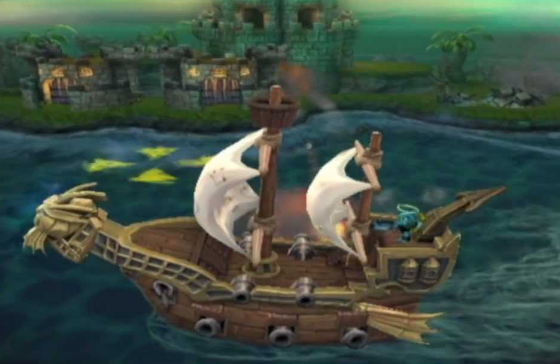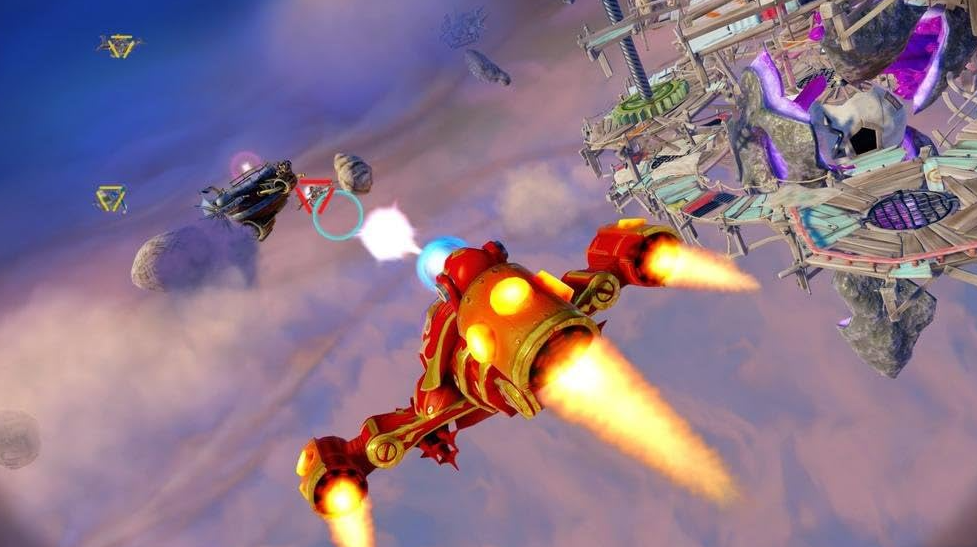Skylanders will always hold a special place in my heart. It’s a project that we quite simply didn’t expect Activision to go for, and I thought that at any moment during development, one of the Activision accountants would burst through the door and yell ‘Waitaminute, you want us to make HOW MANY TOYS?!’ Of course, that didn’t happen, and it felt great to be an instrumental part of a franchise that brought so much joy to kids everywhere. (And maybe even a parent or two.)
In fact, Activision had such faith in the project that they gave us an extra year to work on it to bring it to AAA status. Originally the first game was going to use blocky characters, with a bunch of levels that had a simple aesthetic (translation: ‘cheap to assemble out of common parts’) and were built to be simple, short, fun experiences. Bobby Kotick thought that the initial toy proofs were underwhelming (think ‘Happy Meal’ quality) and that the marketing and distribution plan for the title didn’t match the franchise potential. He asked each of those 2 teams what it would take to make it AAA-worthy, and each team said they could do it in a year. He said ‘do it.' We focused down to 26 levels (from the 60 or so we had in the pipeline) and developed plans to boost the production values and make every level memorable.
Throughout the bulk of the 4 Skylanders games we worked on, my job was to be the wacky ‘change of pace’ designer - the big, epic gameplay moments that we threw at the players to keep things fresh. As such, I got to put players in (or out of) control of giant robots, flying vehicles, pirate warships, and even the occasional DOTA fight.
Skylanders: Spyro’s Adventure - One of the systemic things I developed was the cinematic handler in the first Skylanders game - although it really wasn’t designed to carry a full game’s worth of in-engine cutscenes. I built it just as a way to do ‘reveals’ when a player did a task and we needed the camera to pan over to see what to do next. At some point I used my system to block out one of my levels’ opening cinematic just to show the Animators what it should look like for their (as yet unbuilt) system, and apparently TFB’s top folks thought it looked good enough to ship, so my role evolved into the primary cinematic designer for the game’s levels. it turned into one of the things I loved doing the most.
We also needed a last-minute system to apply some kind of lip-sync during the boss battles for the evil Kaos. We didn’t have time for creating animation for all of the 100 or so lines we had recorded, so in a few hours I had developed a method to stitch sections of our 4 or 5 lip-flapping animations together, and within a day I was able to get all of those done. We even used that system in a few levels to allow the NPC pilot Flynn to similarly express himself with gestures that fit the lines… ”BOOM!”
Skylanders: Giants - The success of SSA caught virtually everyone by surprise…except Activision. They were the ones watching the User Research data, which told them that they needed to invest more, not less, in this franchise. They came to us about six months before we shipped the first game and asked us what it would take for us to release another game for the following year. (They had Vicarious Visions already looking at jumping into the franchise, but VV didn’t think they could get up to speed fast enough.) We were comfortable claiming that we could come up with a game around 70% of the size of SSA, and they thought that was terrific.
We had gotten very proficient with our toolsets, so while Giants had fewer levels (20 to SSA’s 26), they were longer and packed even more full of content, making Giants a bigger game. I still handled some cinematics (mostly for my levels) but Giants turned into a project with a laser-like focus since we literally didn’t have time to experiment, we just had to move.
Skylanders: Trap Team - The idea of trapping villains was an idea that that I came up with while Giants was wrapping up, and after TFB pitched it to Activision as the central gimmick for the next game, they loved it and wanted to patent its physical interaction with the Portal. (I mean, I’m glad to have my name on a patent somewhere, but it’s not like capturing bad guys is a new idea.)
Skylanders Trap Team was our final game using the TFBTool scripting language system that I had been using for the better part of the previous 15 years. I had become one of the level designers with the most detailed knowledge of the system and as such was given quite a bit of the ‘odd’ gameplay bits across many levels.
Skylanders: Imaginators - There’s no other way to describe Imaginators than as a disappointment. With this many games in the franchise, every gameplay area is overstuffed with collectible or NPC interruptions or other legacy moments. In addition, the combat just seemed drawn-out and lackluster.
In level design land, we were working with VV’s toolsets now and learning on-the-fly, so we probably played it too safe with our design choices in order to reduce risk. The 2 levels I contributed each had elements that we expanded into end-game level content in the form of DOTA-like Battlefield missions and a re-use of the Battleship in the form of a Resogun-like circular-2d combat minigame.

















